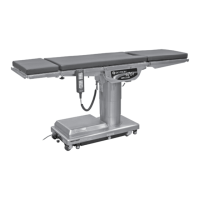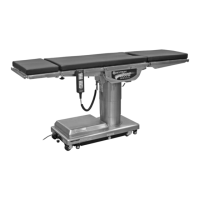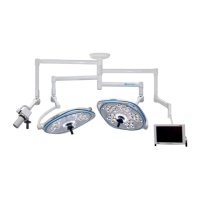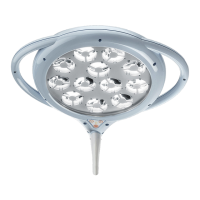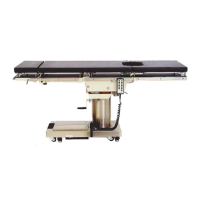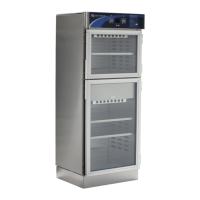Page 13
SECTION III HYDRAULIC TROUBLESHOOTING
3-1. Precautions
Before attempting to troubleshoot any hydraulic
problem on the table, please read through the pre-
cautions and notes below.
CAUTION
When disconnecting any of the hydrau-
lic lines, fittings, joints, hoses, etc., for
the following control functions, be sure
these table surfaces are in their down
position or completely supported.
Elevation
Back Section
Leg Section
Kidney Lift
When working on the trendelenburg or
lateral tilt hydraulic circuits, be sure to
support the table top. When working on
the brake system make sure the brakes
are completely retracted.
CAUTION
Failure to follow these precautions may
result in an uncontrolled oil spray and
damage to the table or personal injury.
3-2. Troubleshooting Notes
When troubleshooting a table malfunction, first
determine the following:
1. Does the problem affect all control func-
tions?
2. Does the problem affect only one control
function?
3. If the problem affects one control function is
it in both directions?
4. Is the problem intermittent?
5. Is the problem no movement of a table
surface or does the table surface lose posi-
tion?
Once the problem has been determined, concen-
trate on that particular hydraulic circuit or control
function.
Listed below are the hydraulic components that
are common with all hydraulic circuits. If there is a
problem with any of them, it could affect all control
functions.
1. Motor/Pump Assembly
2. Reservoir
3. Pressure Relief Valve
4. Certain Oil Lines and Galleys
If there was a problem in the following components,
only one control function would normally be af-
fected.
1. Mini-Valve
2. Slave Cylinder
3. Oil Lines
NOTE
Whenever a hydraulic line or compo-
nent is replaced, bleed the air out of the
lines using the pump pressure before
making the final connection. After all
connections are tight, cycle the control
function back and forth two or three
times to purge the remaining air from the
system.
IMPORTANT
When installing new "O" rings use hy-
draulic oil or white lithium grease to
thoroughly lubricate the "O" rings and
cylinder. Keep everything clean.
Each complete oil circuit is shown on the following
pages. When troubleshooting a particular function,
refer to the appropriate oil circuit diagram and the
list of possible problems.
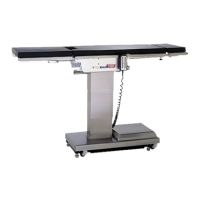
